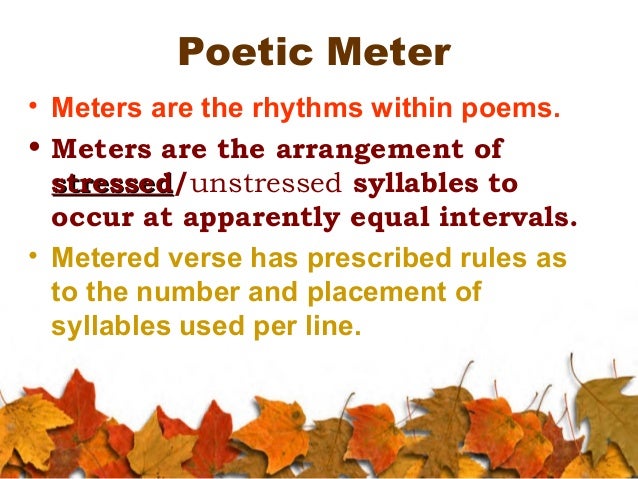
The metre of the old Germanic poetry of languages such as Old Norse and Old English was radically different, but was still based on stress patterns. Many Romance languages use a scheme that is somewhat similar but where the position of only one particular stressed syllable (e.g. in iambic pentameters, usually every even-numbered syllable). The familiar type of metre in English-language poetry is called qualitative metre, with stressed syllables coming at regular intervals (e.g. The metre of most poetry of the Western world and elsewhere is based on patterns of syllables of particular types. (Within linguistics, " prosody" is used in a more general sense that includes not only poetic metre but also the rhythmic aspects of prose, whether formal or informal, that vary from language to language, and sometimes between poetic traditions.)Īn assortment of features can be identified when classifying poetry and its metre. The study and the actual use of metres and forms of versification are both known as prosody. Many traditional verse forms prescribe a specific verse metre, or a certain set of metres alternating in a particular order.

In poetry, metre ( Commonwealth spelling) or meter ( American spelling see spelling differences) is the basic rhythmic structure of a verse or lines in verse. JSTOR ( February 2009) ( Learn how and when to remove this template message).Unsourced material may be challenged and removed.


Please help improve this article by adding citations to reliable sources. This article needs additional citations for verification.


 0 kommentar(er)
0 kommentar(er)
